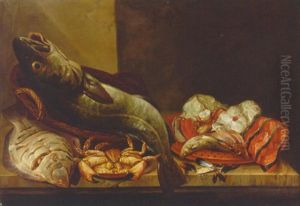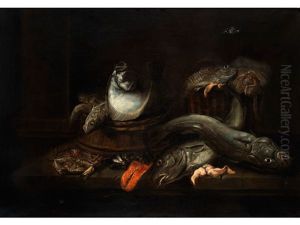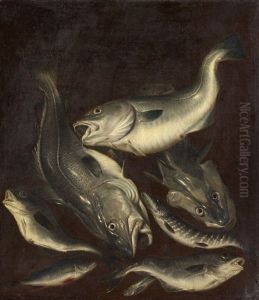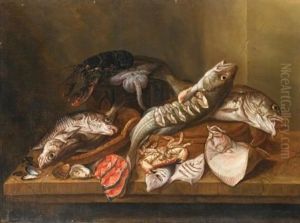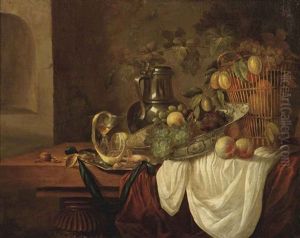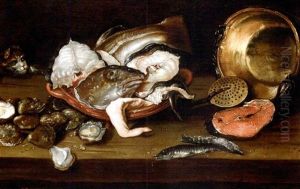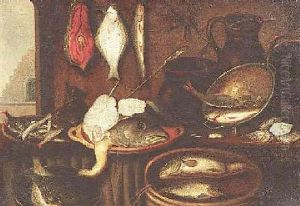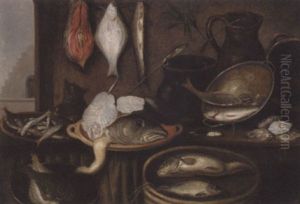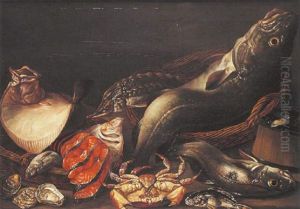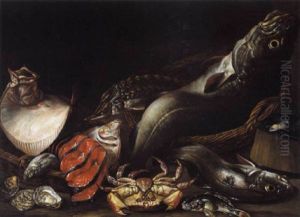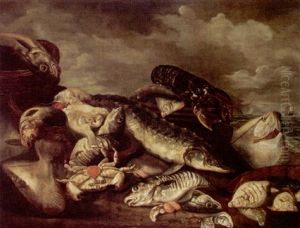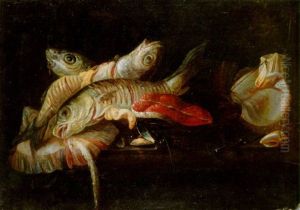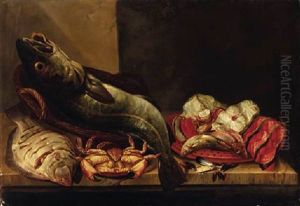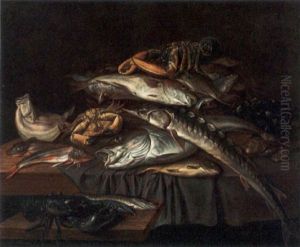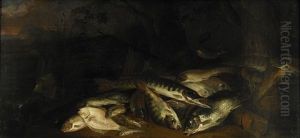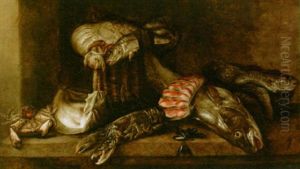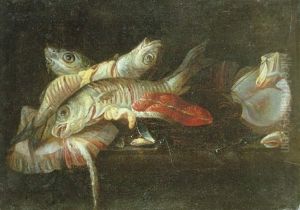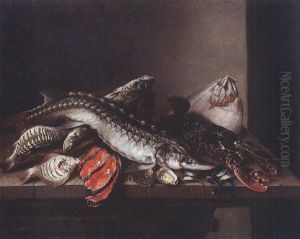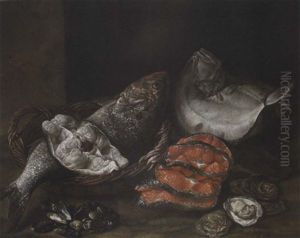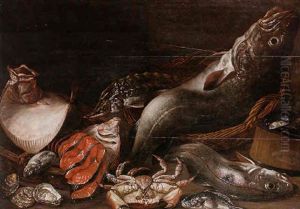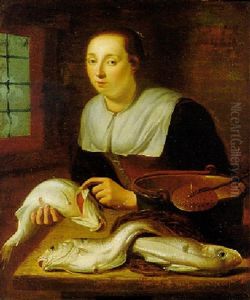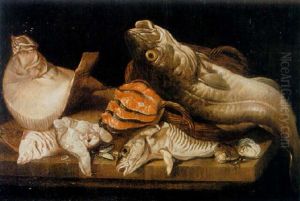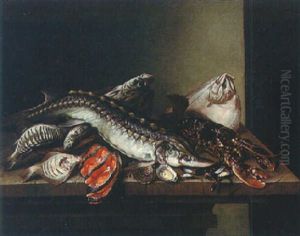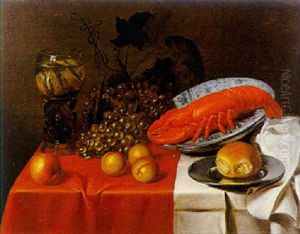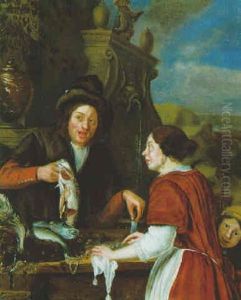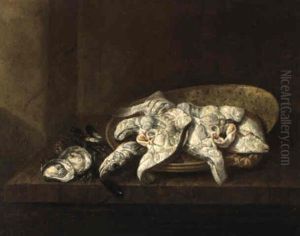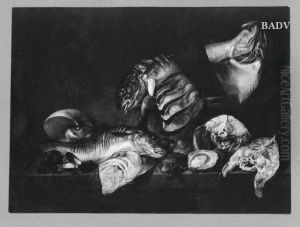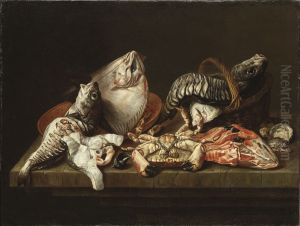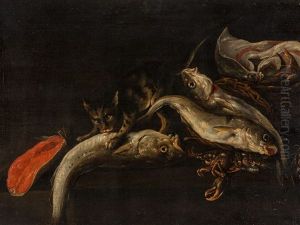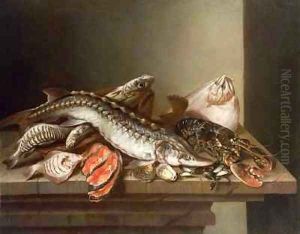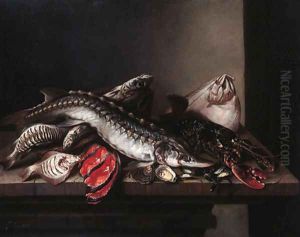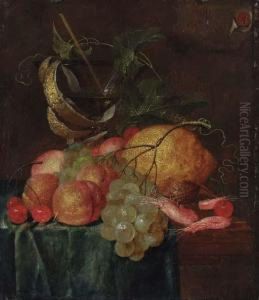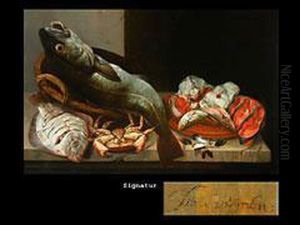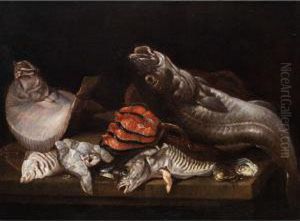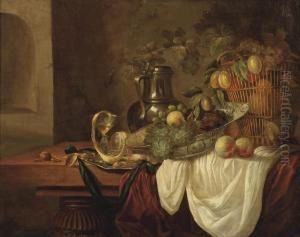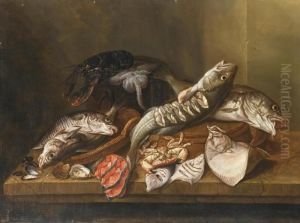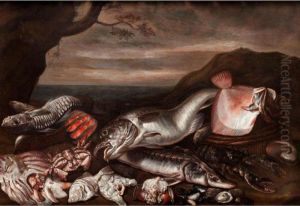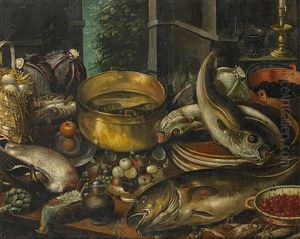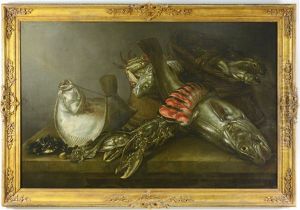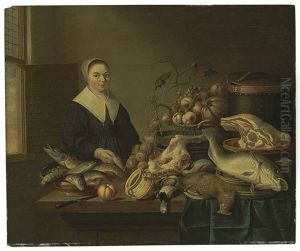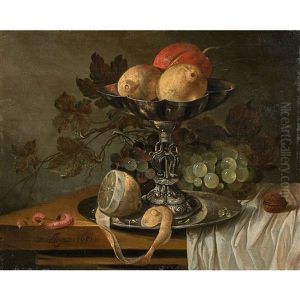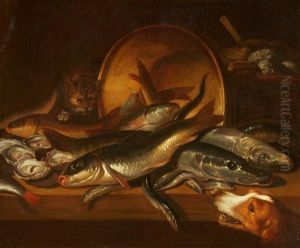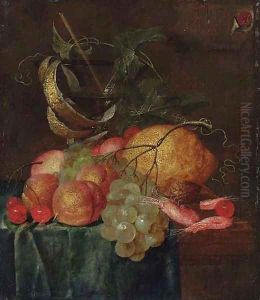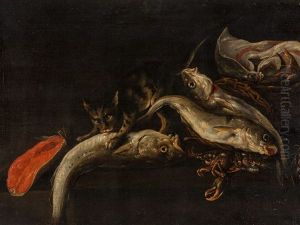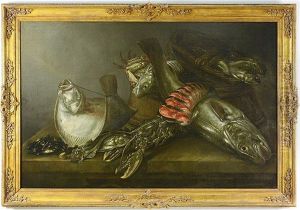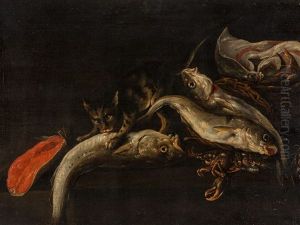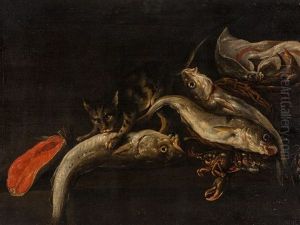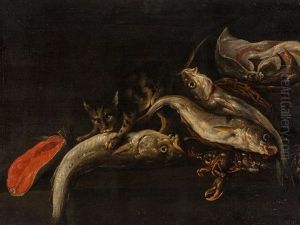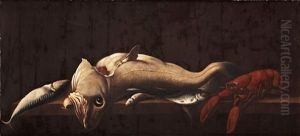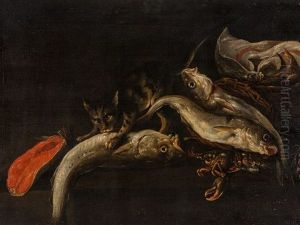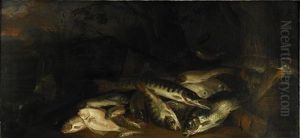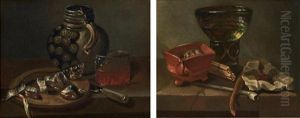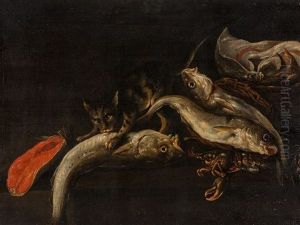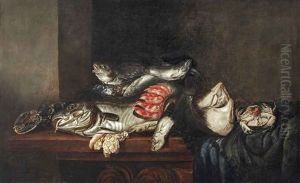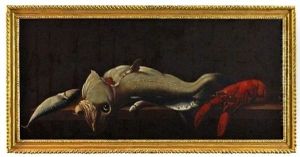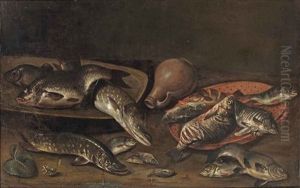Isaac Van Duynen Paintings
Isaac van Duynen was a Dutch Golden Age painter, born in 1628 in Haarlem, Netherlands. He was known for specializing in still-life paintings, particularly those featuring fish, a genre that was popular during his time. The Dutch Golden Age was a period in Dutch history, roughly spanning the 17th century, during which Dutch trade, science, military, and art were among the most acclaimed in the world.
Van Duynen likely trained in Haarlem, which was a significant center for art and culture in the 17th century. This city was home to the Haarlem Guild of Saint Luke, an association of artists of various disciplines. It is possible that van Duynen was a member of this guild, although specific records of his membership and training have not been conclusively identified.
His works are characterized by their detailed and realistic depiction of fish and the textures of marine life. Van Duynen paid great attention to the play of light and shadow on the wet scales of fish, bringing a sense of freshness and immediacy to his compositions. His paintings often featured arrangements of fish on a table or in a basket, sometimes accompanied by other marine objects or food items, which was typical of the still-life genre of his time.
Isaac van Duynen's paintings are considered to be a part of the tradition of Dutch still-life painting that included artists like Pieter Claesz and Willem Claesz Heda. These artists often depicted the bounty of the sea and the wealth of the Dutch Republic during its heyday. However, van Duynen focused more exclusively on fish as a subject matter, which sets him apart from his contemporaries who often depicted a wider range of still-life scenes.
Van Duynen's work was appreciated during his lifetime, and his paintings found an audience amongst the wealthy merchant class in the Netherlands, who were keen patrons of the arts. His works would have been collected by those who had a taste for the sophisticated still-life paintings that reflected their own prosperity and the economic boom of the Dutch Golden Age.
Isaac van Duynen passed away in 1680, leaving behind a body of work that continues to be studied and appreciated for its contribution to the still-life genre. Although not as widely known as some of his contemporaries, van Duynen's paintings are valued for their technical skill and their documentation of 17th-century Dutch material culture. His works are held in various art collections and continue to be exhibited in museums that showcase Dutch Golden Age art.
